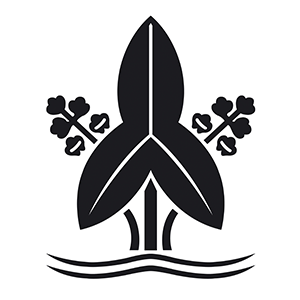Hiroshima Domain (2/2)Asano family continues to rule

Fukushima family crest “Sawatara”
- Article category
- History of the domain
- domain name
- Hiroshima Domain (1600-1871)
- Affiliation
- Hiroshima
- Related castles

Hiroshima castle
- related castles
Yoshihiro Asano, the 10th feudal lord, had a premonition that he would become a wise and intelligent prince from a young age, but unfortunately he died six months after taking over as head of the family.
During the time of the 11th lord, Nagakuni Asano, the domain's finances were very difficult, but he implemented reforms in the domain's administration by appointing both Nomura Taito and Tsuji Masao as chief retainers, and appointed talented people regardless of their status. He also introduced a Western-style military system to rebuild the domain's government.
When the Second Choshu Expedition broke out in 1866, he advocated a cease-fire and, with co-signs from the lords of the Okayama and Tokushima domains, applied to the Shogunate and the Imperial Court to condemn the expedition and to dismiss the army.
In addition, in the first year of the Meiji era, he changed his nickname from Asano Shigenaga, which he received from the Tokugawa family, to Asano Naganori to show his obedience to the Meiji government.
He was very much admired by the people of the territory, and when he tried to move to Tokyo after handing over the headship of the family, farmers started a rebellion called the ``Buichi Rebellion'' to stop him.
Asano Nagakun, the 12th and last lord of the domain, was a person who helped his adoptive father Nagakuni Asano even before he became lord of the domain, and worked hard to negotiate between the Edo shogunate and the Imperial Court.
The Hiroshima domain agreed to peacefully overthrow the shogunate based on Sanyo Rai's idea of respecting the Emperor. The feudal retainers refused to send troops to the second Choshu conquest, saying there was no good cause, but Nagayuki, the governor of Ogasawara Iki, objected.
There were calls within the domain to kill Ogasawara Iki no Kami Nagayuki, but Nagayuki gathered all his vassals in a large hall in Hiroshima Castle and persuaded them that it was unacceptable to kill the roju.
As a result, civil war was avoided, but Ogasawara Iki no kami Nagayuki left Hiroshima, and the second Choshu conquest began, with the Hiroshima domain refusing to send troops.
At the time of the restoration of imperial rule, Chokun worked hard to mediate between the Satsuma and the Shogunate, but in the end, the Tosa clan had hastily submitted a petition for the restoration of imperial rule to the shogunate on its own, and the peaceful transfer was undone. The Dragon War breaks out.
The movements of the Hiroshima domain at this time were quieter and less noticeable than those of the Satsuma, Tosa, and Choshu domains.
However, he worked hard to ensure that times changed peacefully.
Furthermore, during the Boshin War, the Hiroshima clan dispatched an army consisting of 1,200 feudal warriors and farmers called the ``Shinki-tai.'' A carefully selected, cutting-edge force that received Western training and was equipped with the latest weapons, they fought against the combined forces of the Soma clan, the Sendai clan, and the former Shogunate army, helping to bring the Boshin War to an early end.
After the establishment of the Meiji government, Chokun stepped down as the lord of the domain and founded Japan's first Western paper manufacturing factory, Aritsunesha, in 1890. This paper company remained in operation until it was merged with Oji Paper in the Taisho era.
Later, in 1881, he became a member of the Senate, and the following year, he became minister to Italy and traveled to Europe and America. Utilizing his experience at that time, he later sent young people from the former domain and his own appearance to study abroad in England and France.
After that, he continued to be very active as a businessman, investing in the newspaper ``Nippon'' that was launched in 1889, and serving as president of the Jugo Bank, until he passed away at the age of 94.
Hiroshima domain summary
The Asano clan ruled the Hiroshima domain from its early days until the end of the Edo period.
While many feudal lords were short-lived, there were also many wise lords, and the 12th feudal lord, Nagakun Asano, was especially famous as a businessman.
The Asano family lineage still continues, and the current head, Nagataka Asano, serves as honorary principal of Shudo Gakuen, an educational corporation that operates Shudo Junior High School, Shudo High School, and Hiroshima Shudo University, all of which have their roots in domain schools.
Reread the article on Hiroshima Domain
- related castles

- WriterAYAME(Writer)I am a writer who loves history, focusing on the Edo period. My hobbies are visiting historical sites, temples and shrines, and reading historical novels. If there is a place you are interested in, you can fly anywhere. I'm secretly happy that the number of sword exhibitions has increased recently thanks to the success of Touken Ranbu.



